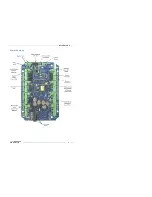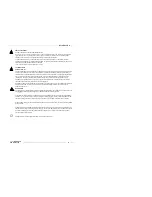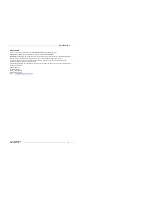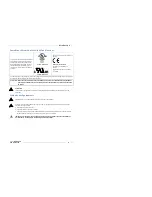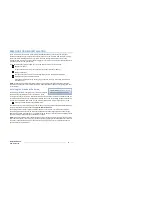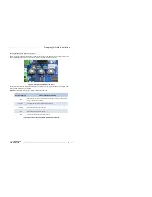
22
DENT
Instruments
PowerScout 24
Prepping for Field Installation
Decimal Address
Modbus Address Availability
000
Reserved for resetting the PowerScout to Modbus mode with 9600 baud,
8 bit, 1 stop bit and no parity.
001-239
Available for Modbus slave devices.
255
Reserved for network wide broadcast.
999
Reserved for communication protocol settings. The rotary switches can
be used to configure the communication protocol to BACnet or Modbus
as well as changing the baud rate if unsure of the current settings.
Table 3: Modbus Hexadecimal/Decimal Address Availability
A
DDRESSING AN
E
LEMENT
The PowerScout 24 has eight elements. Modbus and BACnet each use different ways to designate an
element on the PS24.
In Modbus mode, the decimal network switches set the base address for metering element “A.”
Metering elements “B” through “H” will always have a Modbus address that is one higher than the
element before. For example, if the rotary address switches are set to 001 then metering element “A”
register values will be accessed at Modbus address 001, element “B” registers will be accessed at
Modbus address 002, element “C” at address 003, and so on.
In BACnet mode, elements are incrementally (in alphabetic order) designated by adding 20000 to an
object value. So, Element A = Base object number zero, Element B = Base object number zero + 20000,
Element C = Base object number zero + 40000, and so forth. Thus, to reference object 15010 to
Element E, write 95010 (15010 + 80000).
PS24 Element
BACnet Designation
PS24 Element
BACnet Designation
A
0 (Base Object)
E
Base 80000
B
Base 20000
F
Base 100000
C
Base 40000
G
Base 120000
D
Base 60000
H
Base 140000
Table 4: BACnet Element Designation

